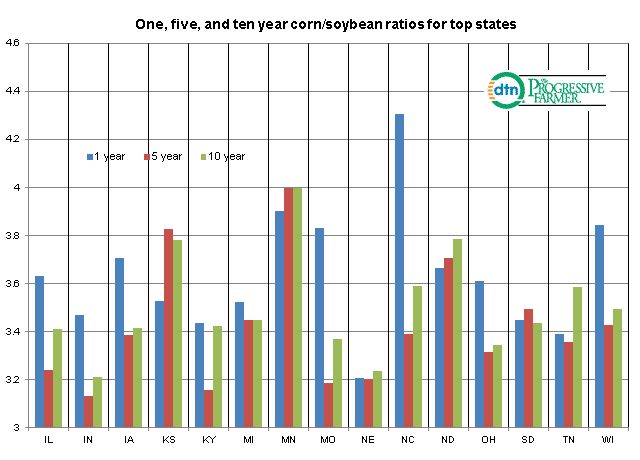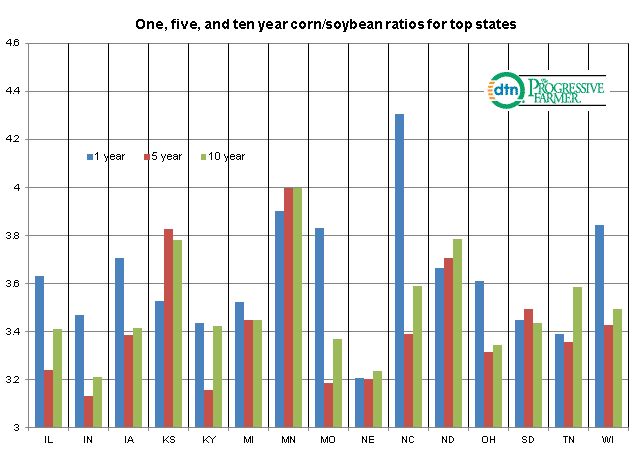Fundamentally Speaking
Corn-Soybean Yield Ratios for Top States
There has been a lot of discussion about how U.S. farmers will cut back on their corn plantings in favor of more soybean seedings for 2014.
There are a number of reasons why this may occur but most prominent is sentiment that potential soybean returns per acre will exceed those for corn.
In 2013, the U.S. produced a record corn crop and in response, corn prices fell close to 40% from January to December.
Soybean output was decent but as opposed to corn, demand from both domestic and foreign users was much better resulting in a much more moderate 6% decline in prices last year.
P[L1] D[0x0] M[300x250] OOP[F] ADUNIT[] T[]
The November soybean-December corn futures price ratio at the start of the year was 2.45 and that is higher than the 10 and 25 year average of 2.36 and the highest ratio to start the year since 2006.
Furthermore, a number of land grant university crop budget studies for the upcoming season we have seen show hypothetical corn returns even or just slightly ahead of soybeans as opposed to the very large advantage corn has had over soybeans in recent years.
Of course, producers do not always think in economic terms and sometimes acreage allotment decisions are made on yield considerations.
Besides the greater returns per acre that corn has garnered over the past few seasons, farmers have been more willing to go with corn feeling that crop will hold up better in more stressful growing conditions that have been commonplace the past few seasons.
The accompanying graphic shows the corn-soybean yield ratios for the top states that grow both, which is 15. The one, five, and 10 year ratios are plotted for each.
Last year the national soybean yield at 43.5 bushels per acre (bpa) was closer to trend than the 158.8 bpa corn yield yet nine of the 15 states saw their one year corn-soybean ratio higher than the five or ten year average.
Using just a one year ratio does not provide that much information and recall that 2013 weather featured a cold wet spring and a dry second half of the growing season.
This may have adversely affected soybeans more than corn, as some plants may not have been mature by the time the first fall freeze arrived and the dry August-September hurt the later developing soybeans more than corn.
On the other hand, the five year corn-soybean yield ratio is higher than the ten year ratio for only two states, KS and SD with MI and MN having the same ratio.
This means that 11 of the 15 states have seen soybean yield improve relative to corn over the past five years and that may allay producer fears about planting more soybeans at the expense of corn.
We hope to do further work to see if the disastrous 2012 corn yields were responsible for this development.
(KA)






Comments
To comment, please Log In or Join our Community .